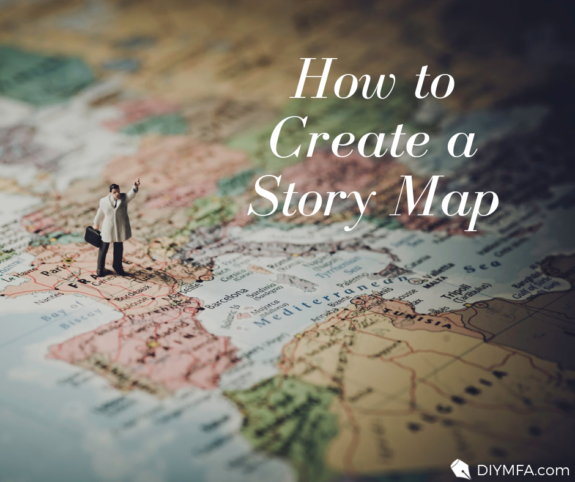One of my favorite ways to outline or plan a story is to map it out like a subway or road map. Here’s how this technique works.
Each road or subway line represents a different story-thread or plot line. The dots (exits on the highways or subway stops) represent different scenes or moments in the story. Black dots represent local exits or subway stops (moments that apply only to that one storyline) while the white dots indicate moments where two or more plot lines intersect.
By mapping your story out in this way, you can tease apart the different plot threads in your story and make sure that each story arc makes sense in terms of build-up and tension. Also, it can be difficult to juggle multiple story threads at the same time so when you use this subway map technique, you can isolate the main plot or one of the subplots and look at it separate from the others.
For a downloadable version of the story map below, click here and sign up with your email address. The map shows a (very basic) outline Suzanne Collins’ The Hunger Games. (Note: Because this is an outline, it inevitably includes spoilers. You have been warned.)

Step 1: Write out your scenes.
I like to use index cards for this step, where for each scene I jot down a brief description of who is in the scene, what happens and why the scene is important to the story overall. The why is key because if I can’t figure out what purpose a particular scene serves in the story, then it probably means that scene is dispensable and I should get rid of it.
Step 2: Figure out your main story threads and the Dramatic Question related to each.
Every novel has a main plot thread and at least one or two subplots. Each of these plot threads is driven by what’s called the Dramatic Question. For the main plot thread we have the Major Dramatic Question (MDQ) and for the subplots we have what I like to call the Lesser Dramatic Questions (LDQ’s). These Dramatic Questions boil down each plot thread and propel them forward.
For example, in The Hunger Games the Major Dramatic Quesiton is: Will Katniss survive the Hunger Games? We also have questions that relate to the subplots of the novel (such as the love story between Katniss and Peeta or her relationship to her younger sister, Prim). Those questions are: Will Katniss love Peeta back? and Will Katniss be able to protect her family? These are the questions that readers will be holding their breath to find out the answers to as the plot threads develop.
Step 3: Sort out your scenes according to which plot threads they relate to.
Remember, some scenes can belong in more than one plot thread. In fact, most key scenes in a novel (like big turning points or the climax) will relate to multiple plot lines. I usually do this step by drawing colored dots on each index card. The color of each dot indicates the plot thread(s) where that scene belongs.
Step 4: Draw your map.
Now that you have your scenes sorted out and you know which scene falls where, you can draw your map and look at how the different plot lines intercept. You can also separate the main plot from the subplots and see how each individual arc works.
What I like about this technique:
- It allows you to look at plot lines together and individually whereas most outline techniques force you to look at all plot lines at once.
- It forces you to think about your story’s major dramatic question (and the lesser dramatic questions). This means you have to be able to boil down each plot line to one question. If you can do that, then you know the main plot of your story.
- It’s very visual so at a glance you can see your entire story and how everything fits together. This is especially helpful for writers like me, who are more visually-than-verbally oriented and have a tough time with traditional outlines.







